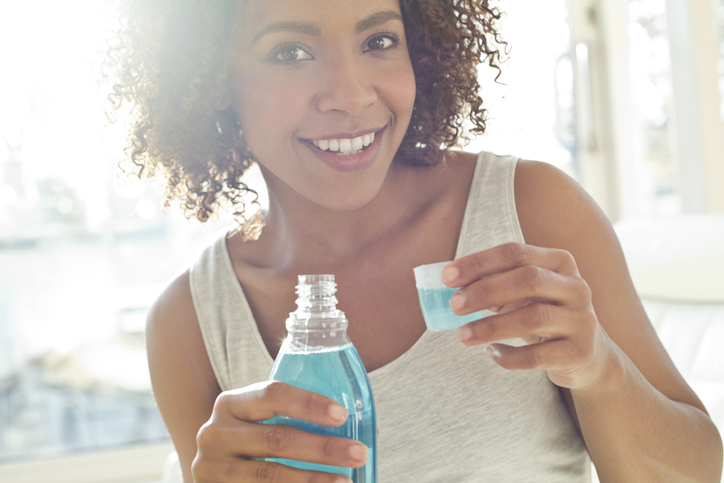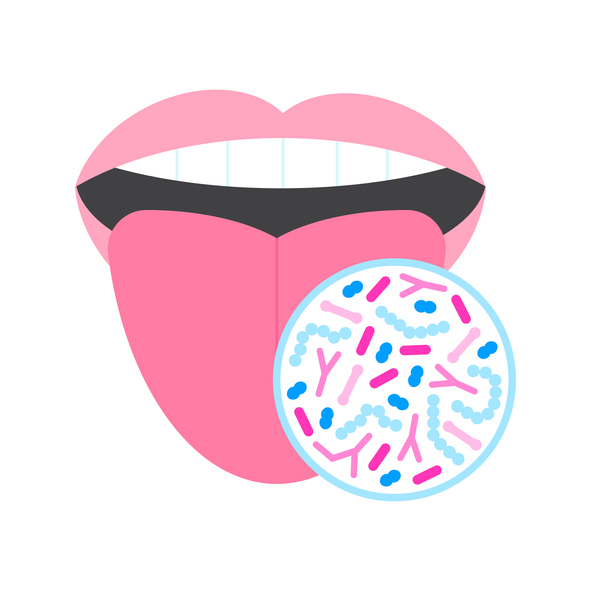There is No One-Size-Fits-All to Choosing Mouthwash. Here’s What You Need to Know.

By Joy Stephenson-Laws, JD, Founder
It’s amazing and sometimes terrifying what you might find on the Internet when you are simply just searching for useful information about everyday products.
For example, in my quest to find more information about the best type of mouthwash to use, I came across a horrifying story from 2019 about a Walmart shopper who filmed himself taking a big swig of Listerine from a bottle without purchasing it, spitting the mouthwash back into the bottle and then putting it back on the shelf. Not surprisingly, social media went crazy over this antic. I was happy to read that the shopper did eventually purchase the tampered bottle of mouthwash and displayed the receipt to prove it. Nonetheless, actions such as these, in my opinion, encourages poor, attention-seeking behavior at the expense of other people’s wellness.
So, yes, be extra vigilant and make sure that things you buy at the store have not been tampered with. Check the seals. Look at the product. Trust your instinct. If something looks off to you, put it back and alert a store manager or employee.
Moving on, I now want to point out the type of mouthwash that was tampered with in this story: Listerine. This is a very popular brand of mouthwash. In fact, I cannot name many other commercial brands of mouthwash besides Listerine. I’m sure many of you are quite familiar with Listerine’s distinct blue color and that powerful burning sting it delivers. But popular does not mean it is the best option for everyone.
Listerine is an antiseptic mouthwash that promises to kill 99.9% of germs that cause bad breath, plaque and gingivitis. There are different types of Listerine, but for now let’s refer to the Cool Mint antiseptic mouthwash with that distinct blue color I referred to.
Cosmetic vs. Therapeutic Mouthwashes
According to the American Dental Association, there are two types of mouthwashes: cosmetic and therapeutic. Cosmetic mouthwashes simply mask bad breath and may leave a pleasant taste in the mouth. They do not contain agents that actively kill bacteria in the mouth. Antiseptic mouthwashes, such as Listerine, and antibacterial mouthwashes are considered therapeutic because they actively kill microbes. Antiseptics, however, target bacteria, viruses and fungi while antibacterials just target bacteria.

Mouthwashes with Alcohol
The Cool Mint Listerine I mentioned earlier contains alcohol (there is also an alcohol-free Listerine). If you are someone who has mouth sores or experiences dry mouth, you should opt for alcohol-free mouthwashes. Alcohol can aggravate sores and make dry mouth worse, because alcohol is a drying agent. Having a dry mouth also makes a person more susceptible to developing cavities.
If you do have dry mouth, check out this recent dental article about the best five mouthwashes for dry mouth. As a general rule of thumb, you want to look for a mouthwash not only free of alcohol but also one that contains aloe vera and xylitol (which is a natural sugar alcohol that occurs in some plants). These ingredients are moisturizing and have antibacterial powers.
Mouthwashes with Chlorhexidine
“A prescription mouthwash containing chlorhexidine can treat gingivitis, a gum disease that causes gums to swell and bleed. And for mouth cancer patients, some prescription mouthwashes can help in the management of mouth sores that may occur with chemotherapy or radiation,” reports Dr. Angelo Mariotti, Professor and chair with the Periodontology College of Dentistry at Ohio State University.
Mouthwashes with Hydrogen Peroxide
Hydrogen peroxide has very powerful antiseptic and antibacterial properties. It has huge benefits when it comes to oral care and is a mouthwash that my dentist recommends. Used in a controlled manner, (1.5-3% hydrogen peroxide), these mouthwashes with hydrogen peroxide can do the following:
- Ease sore throat. Reportedly, a "peroxide oral rinse can also help you get rid of the mucus build-up in your throat. When hydrogen peroxide comes in contact with the mucus, it creates a foaming effect. This foam loosens the mucus and makes it easier to drain."
- Whiten teeth. There is evidence that the consistent daily use of a peroxide rinse can result in whiter teeth.
- Treat gum disease. The antibacterial properties of this mouthwash allows it to help in treating gum disease. Gargling with this mouthwash helps to reduce gum inflammation. "A big advantage of peroxide oral rinse is that it can reach areas in the back of your mouth that your brush and floss can’t reach," according to MedicineNet.
There is even evidence that hydrogen peroxide mouthwash is effective in reducing the incidence of ventilator associated pneumonia (VAP) in patients admitted to the intensive care unit (ICU).
Ask Your Dentist
The variety of options can be overwhelming, especially if you have no guidance or do not know the current status of your oral health. This is why it is always good to get routine dental exams and cleanings, and from there your dentist can help you develop a flossing, brushing and mouthwash regimen specifically designed for you. Your dentist can also help you determine if you are using too hard or too soft of a toothbrush and help with choosing the best toothpaste.
Use Common Sense
Just like reading food labels, I read mouthwash labels and put anything back on the shelf that contains artificial flavors, colors and sweeteners. If I do not recognize an ingredient, I put it back. There are so many natural mouthwashes out there that you can find at your local Target or grocery store. You may want to consider ones that contain coconut oil and tea tree oil. Tea tree oil is an antibacterial, antifungal and anti inflammatory, and coconut oil is known to reduce inflammation and plaque that may lead to gum disease. These ingredients may keep your gums from swelling and bleeding.
Finally, Diet is Always Important
Eating a sugary, processed foods diet and not drinking enough water is definitely a way to harbor an overgrowth of the bad bacteria in the mouth that can lead to tooth decay and gum disease.
There is also evidence that an insufficient intake of vitamin A, B1, C and E, iron, folate and phosphorus significantly exacerbates periodontal disease in adults age 30 and older. It is recommended that you identify foods which contain these nutrients in order to increase the intake of the above micronutrients to reduce the proliferation of gum disease. Read more about this here.
Enjoy your healthy life!
Disclaimer: This article is not intended to provide medical advice. Please consult with your doctor or another competent healthcare practitioner to get specific medical advice for your situation.
The pH professional health care team includes recognized experts from a variety of health care and related disciplines, including physicians, attorneys, nutritionists, nurses, and certified fitness instructors. This team also includes the members of the pH Medical Advisory Board, which constantly monitors all pH programs, products, and services. To learn more about the pH Medical Advisory Board, click here.







